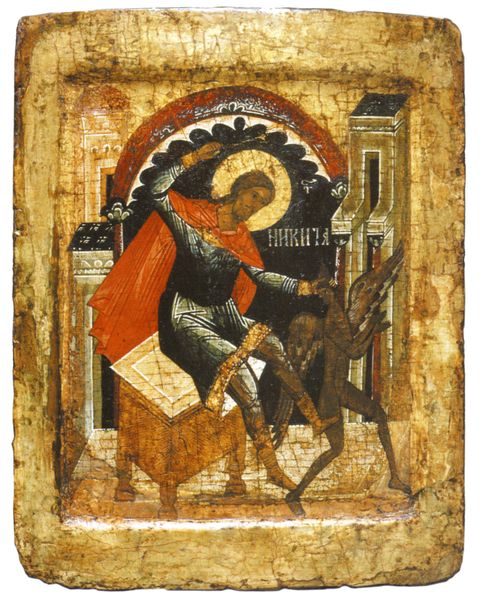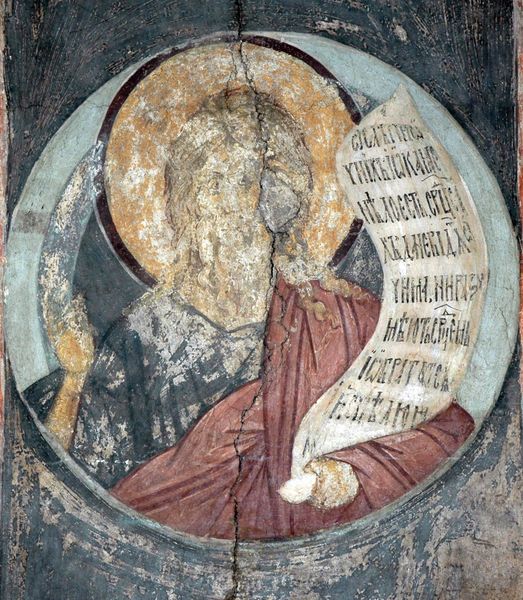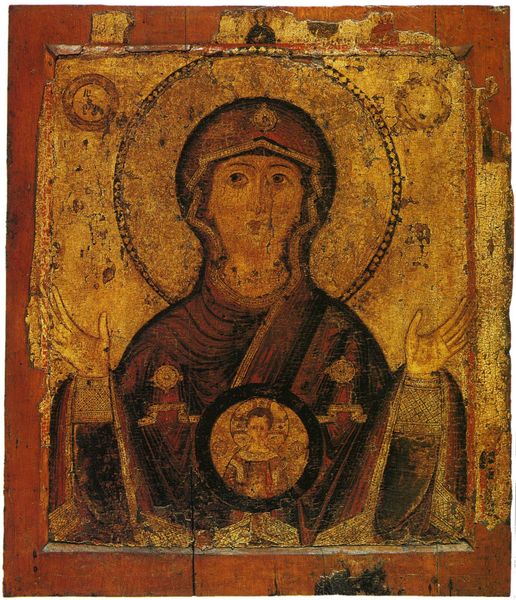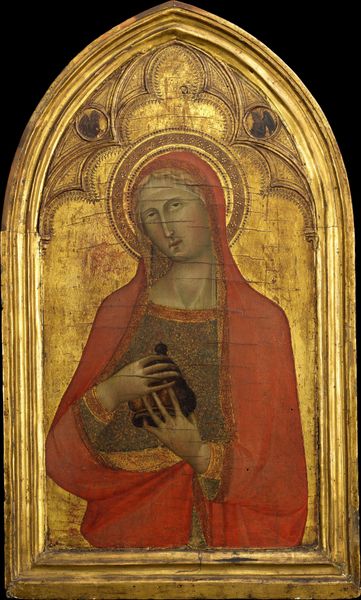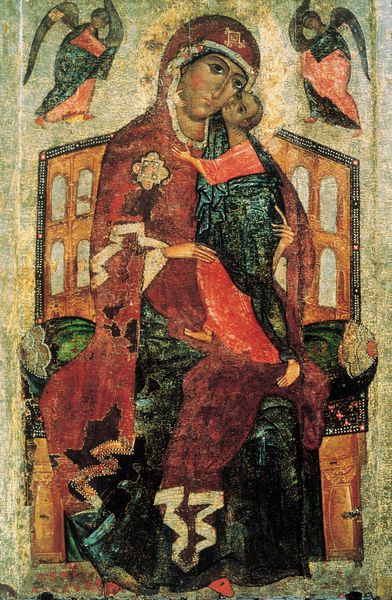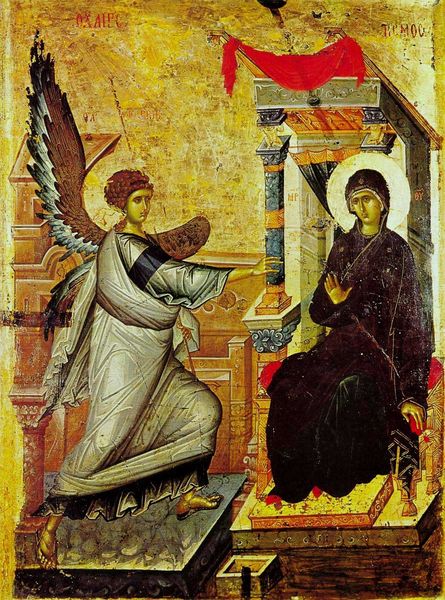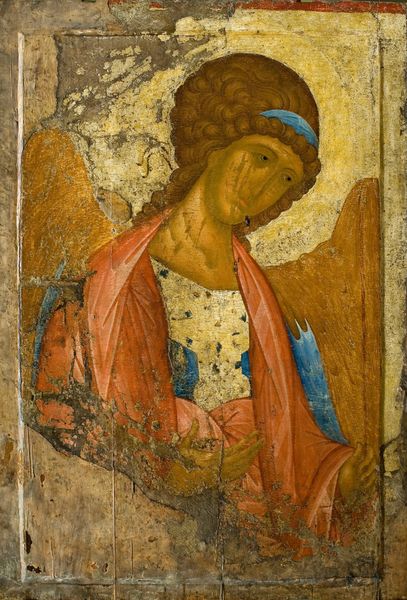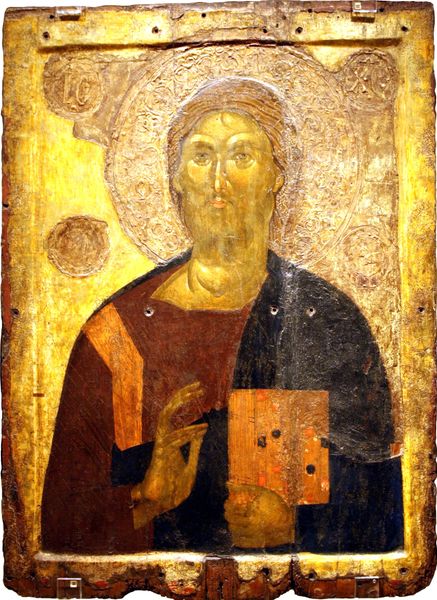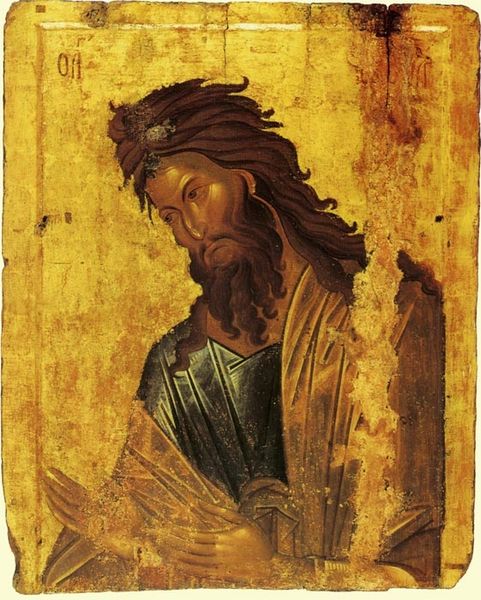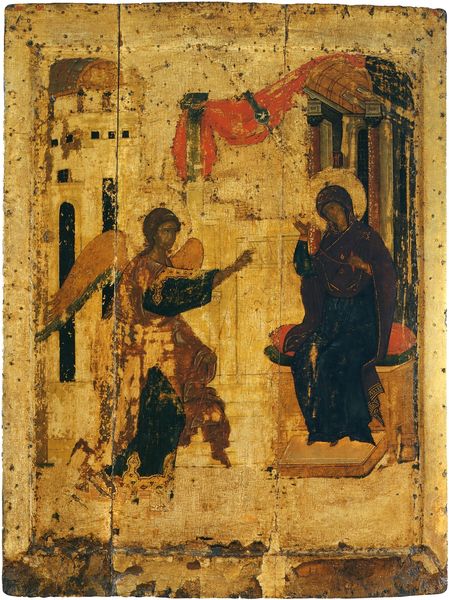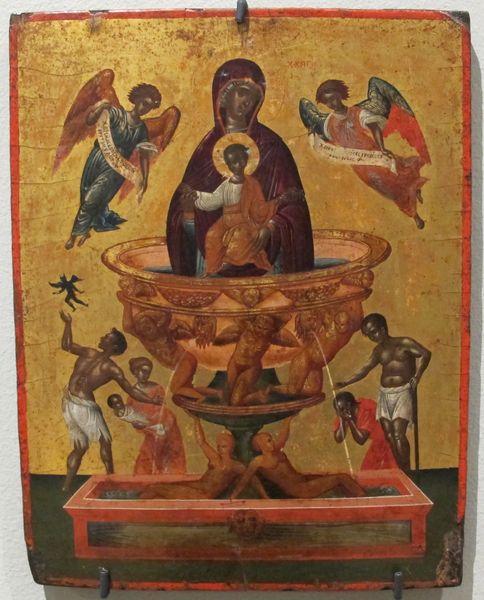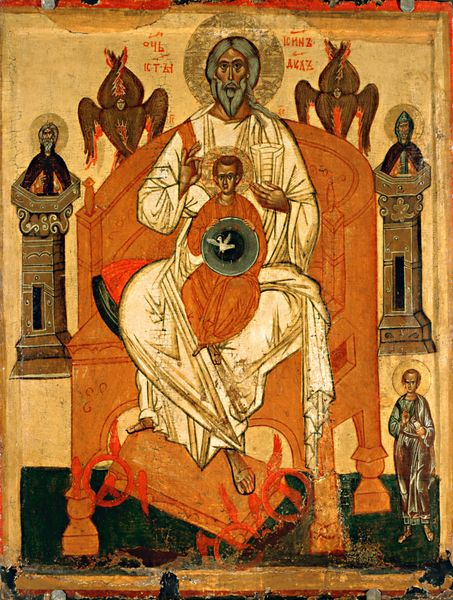
panel, tempera, painting
#
byzantine-art
#
medieval
#
panel
#
narrative-art
#
tempera
#
painting
#
landscape
#
figuration
#
oil painting
#
history-painting
Copyright: Orthodox Icons,Fair Use
Curator: Before us is "Moses and the Burning Bush," a tempera on panel icon created around the year 1300. It currently resides in Saint Catherine's Monastery at Mount Sinai. Editor: The initial impression is quite striking. The gold background lends an otherworldly quality, contrasting with the very earthy rendering of the landscape and Moses himself. The overall mood evokes humility, a sense of reverence. Curator: The choice of tempera and the Byzantine style connect it deeply to the religious practices of the time. Icons like this one weren't just aesthetic objects; they were believed to be portals to the divine, playing a central role in Orthodox Christian worship. The monastery itself being a pilgrimage site is central to its public role and interpretation of imagery. Editor: It’s interesting to think about this work in light of contemporary thought regarding the 'sacred'. Moses removing his sandal becomes a performative act dismantling hierarchies. The representation becomes more than a symbolic moment; it serves to break free from conventions that govern relations of the modern era. Curator: Absolutely. The artist's interpretation reflects both artistic conventions and broader socio-political narratives of the era. Moses, as a figurehead against oppression, gains more power given his placement inside an area outside the dominion of Imperial powers. Editor: Looking closer, one can appreciate the power relations at play. Even in something that appears devout, the narrative unfolds in a much deeper analysis when we confront it through multiple prisms of thought, reflecting upon cultural identity and more. The art of observation invites further examination. Curator: The study of art is to investigate art, culture, and time and this one particularly brings up exciting notions on different realities. Editor: For me, this icon stands as a powerful example of how faith and imagery become one. It allows contemplation while simultaneously reminding us of faith and the complex interplay of its narrative, artistic representation, and cultural values, sparking continuous debate with society.
Comments
No comments
Be the first to comment and join the conversation on the ultimate creative platform.
